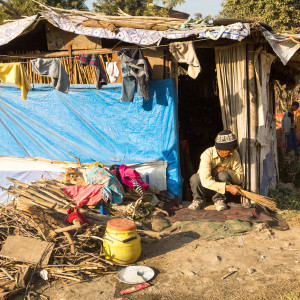In our world of laptops, iPads, flat-screen TVs, microwaves, and jet-skis, it is easy to forget that 1.3 billion people on this planet, nearly one in five overall, do not have access to electricity. Even fewer people have access to clean cooking areas, as 2.6 billion people (38 percent of the world’s population) use traditional biomass—such as wood and animal dung—or coal indoors to cook their meals. As a result, indoor air pollution prematurely claims 3.5 million lives every year, more than double the lives claimed by either malaria or HIV/AIDS. These people are victims of energy poverty.
Energy poverty is the lack of consistent access to adequate energy services, and it is directly related to poverty indicators such as infant mortality, illiteracy, life expectancy, and total fertility rate. A key way to liberate people from high infant mortality rates and inadequate health care is to increase the amount of energy they consume.
Increasing energy consumption has long been directly tied to economic growth and improvements in human welfare, and access to modern energy is essential for providing people with clean water, sanitation, and health care. It’s also important for lighting, heating, cooling, cooking, and helping people communicate with one another.
According to World Bank Vice President Rachel Kyte, “Access to affordable energy is absolutely fundamental in the struggle against poverty. It is energy that lights the lamp that lets you do your homework, that keeps the heat on in a hospital, that lights the small businesses where most people work. Without energy, there is no economic growth, there is no dynamism, and there is no opportunity.”
Unfortunately, the World Bank claims renewable energy is the best way to illuminate the homes of the world’s energy-poor, 95 percent of whom live in developing Asia and Sub-Saharan Africa. Although some remote areas could benefit from off-grid power generation from solar panels, real improvements in the lives of the energy-poor require a more traditional grid system, which can be cleanly and affordably powered by natural gas, which the United States has in abundance.
A recent analysis for the Center for Global Development (CGD) shows investing $500 in renewable energy can pull one person out of poverty, but investing that same $500 in natural gas electrification can pull more than four people out of poverty. The CGD conservatively estimates 90 million people would gain access to electricity if the Overseas Private Investment Corporation were allowed to invest solely in natural gas projects, meaning 60 million more people would gain access to electricity than if the organization invested only in renewable sources. The current policy is as sickening as it is irresponsible.
Instead of focusing on doing the most good for the most people, the World Bank provides only a fraction of people with electricity because it insists on using a politically favored source of energy. Poverty is the principal cause of hunger. The worlds’ governments are forcing millions of people to go hungry unnecessarily because the waste of millions of dollars on renewable energy leaves three out of four people in the world in energy poverty.
Although some people may prefer to keep energy consumption low in developing countries to allay concerns about climate change, keeping millions of “other people” in the dark while living in societies largely powered by fossil fuels is not only hypocritical, it’s cruel. It looks especially heartless when one considers providing basic modern energy access to energy-poor people would increase global energy consumption by just 1 percent.
A recent study by Practicalaction.org found providing 100 percent of electrification and 100 percent of cooking ability would increase carbon dioxide emissions by as little as 2 percent. That’s a small price to pay to save 3.5 million lives.
People who don’t have electricity or a clean source of energy to cook their food don’t need expensive and wasteful government boondoggles; they need electricity and clean cooking fuel. We could do vastly more good for many more people by investing in clean, conventional sources of energy, brightening the lives of millions of people.

